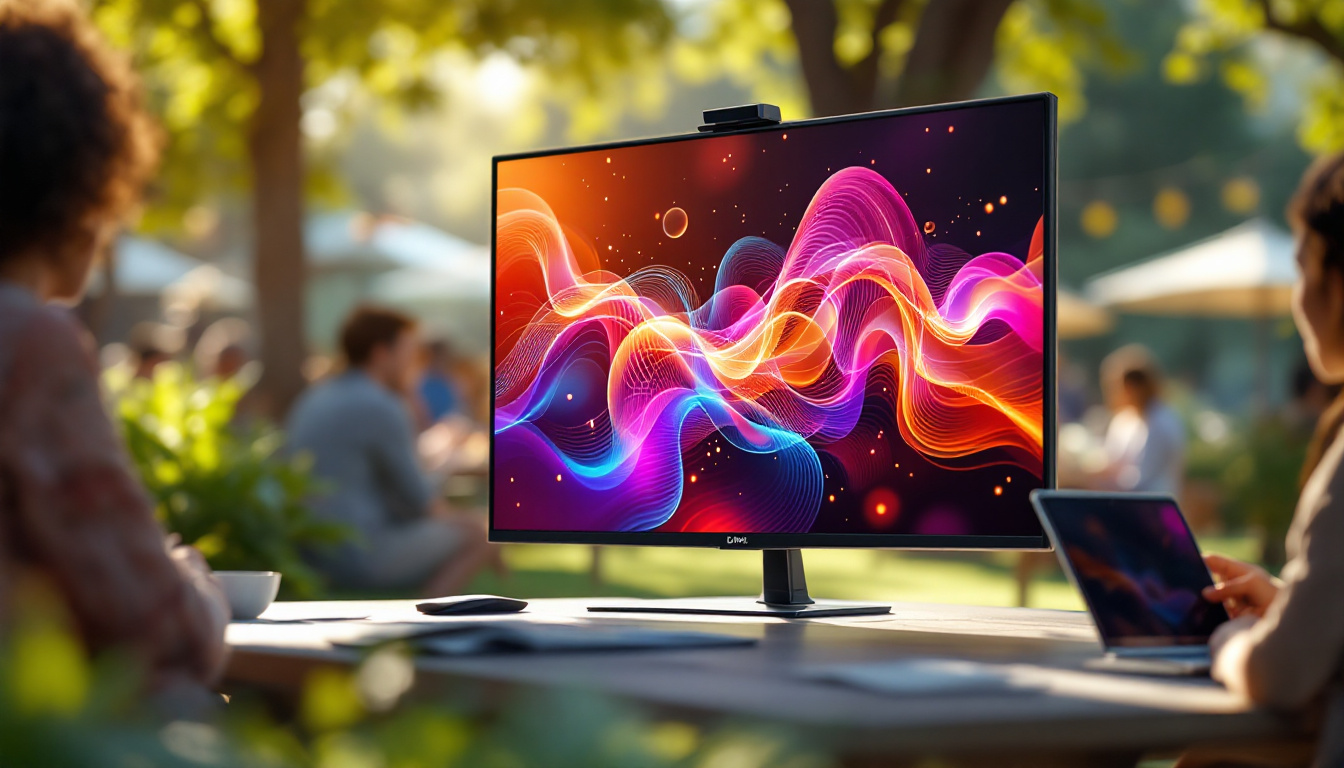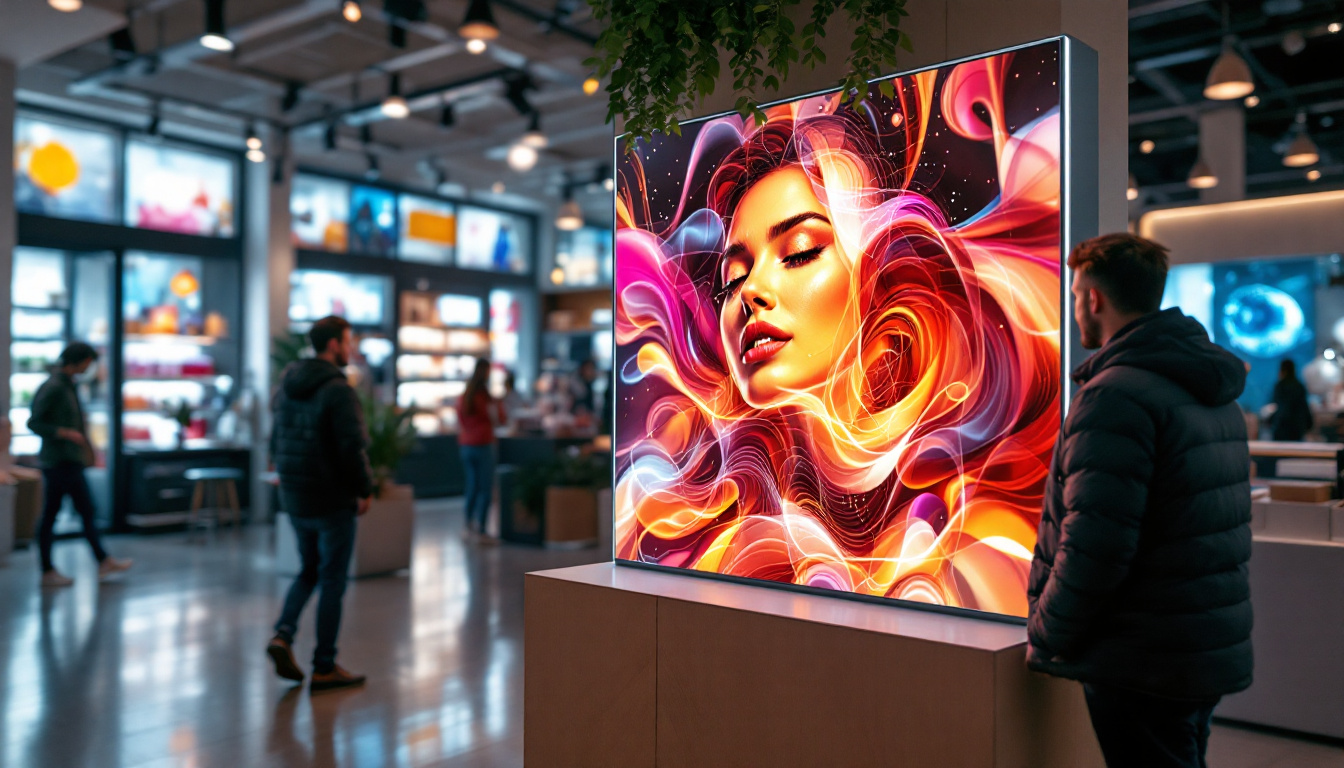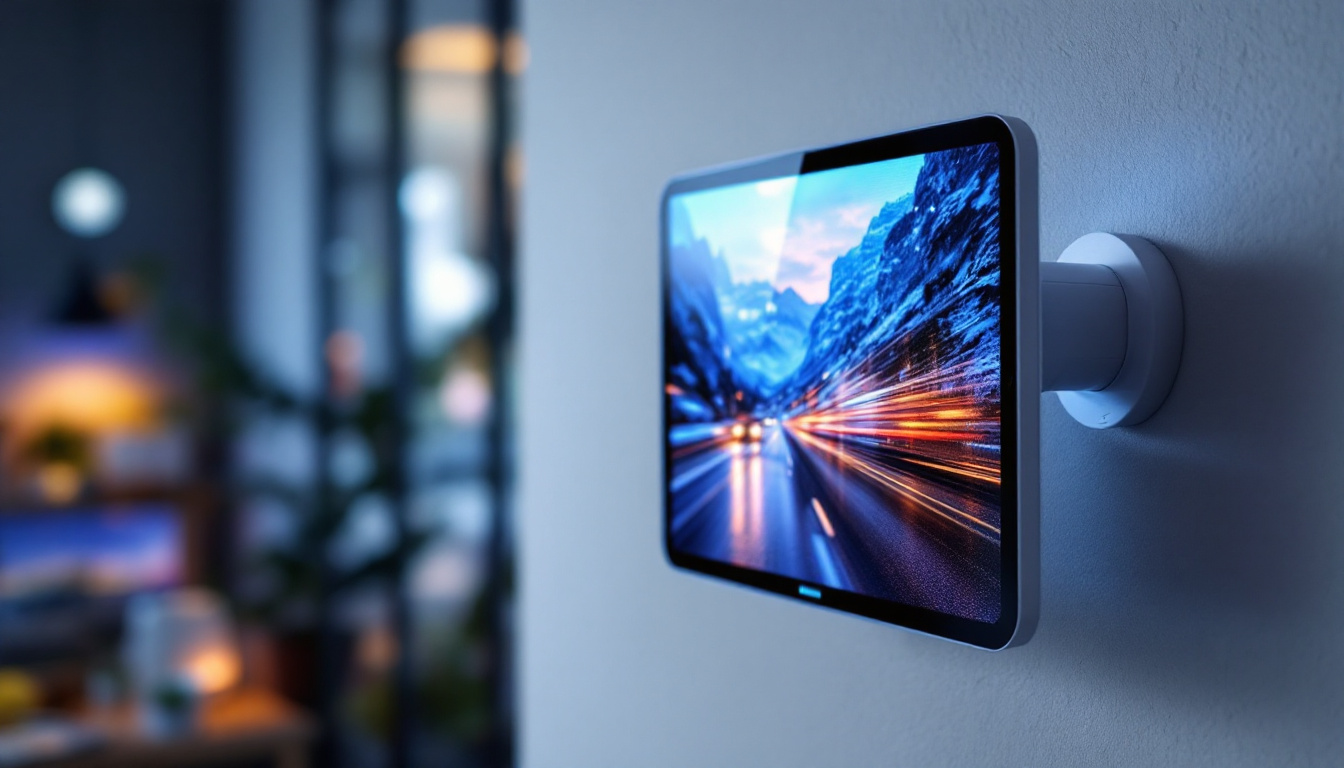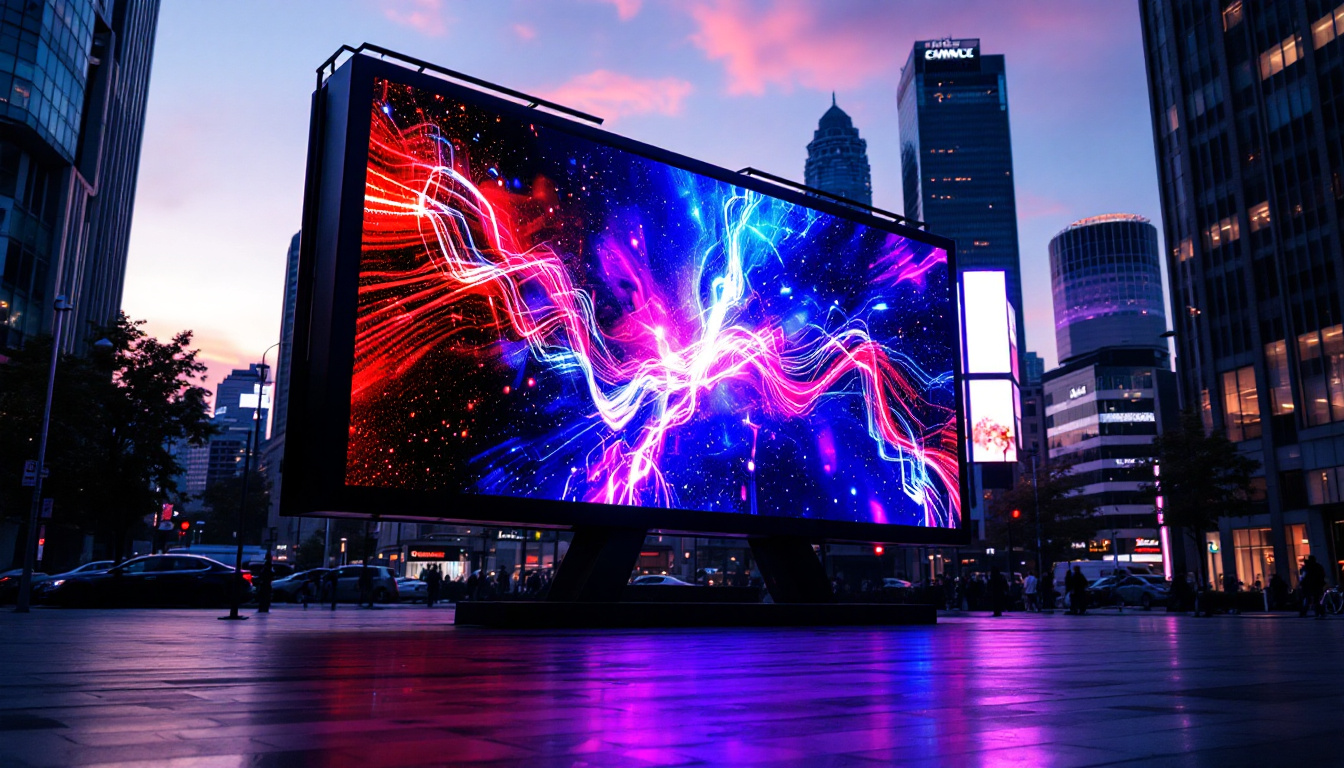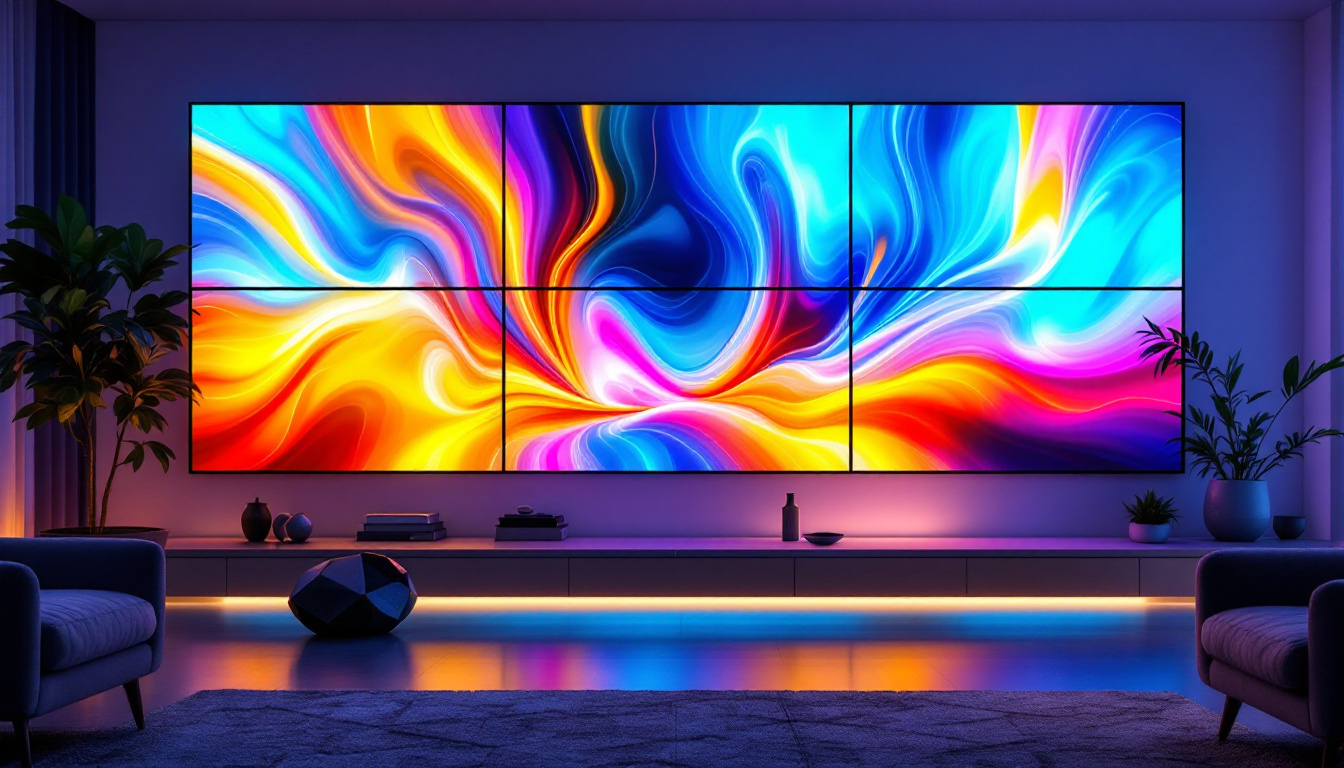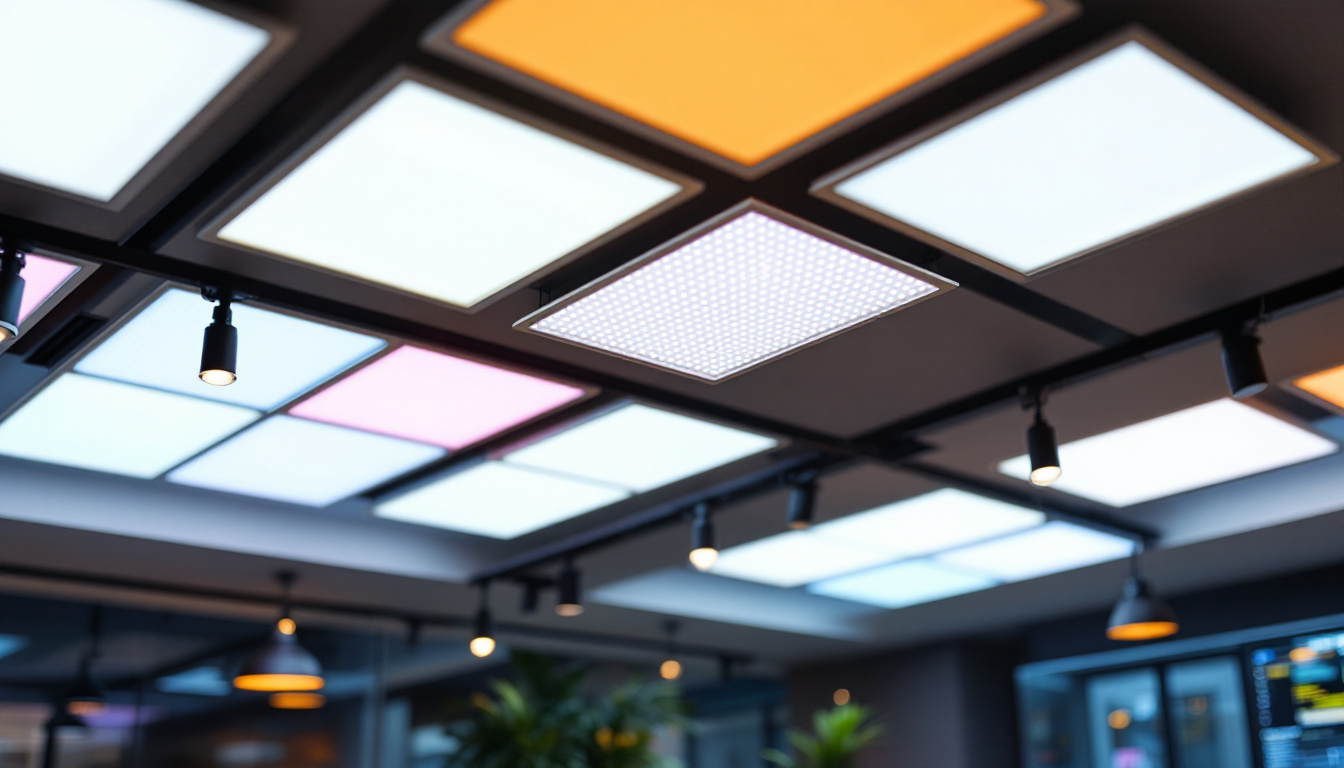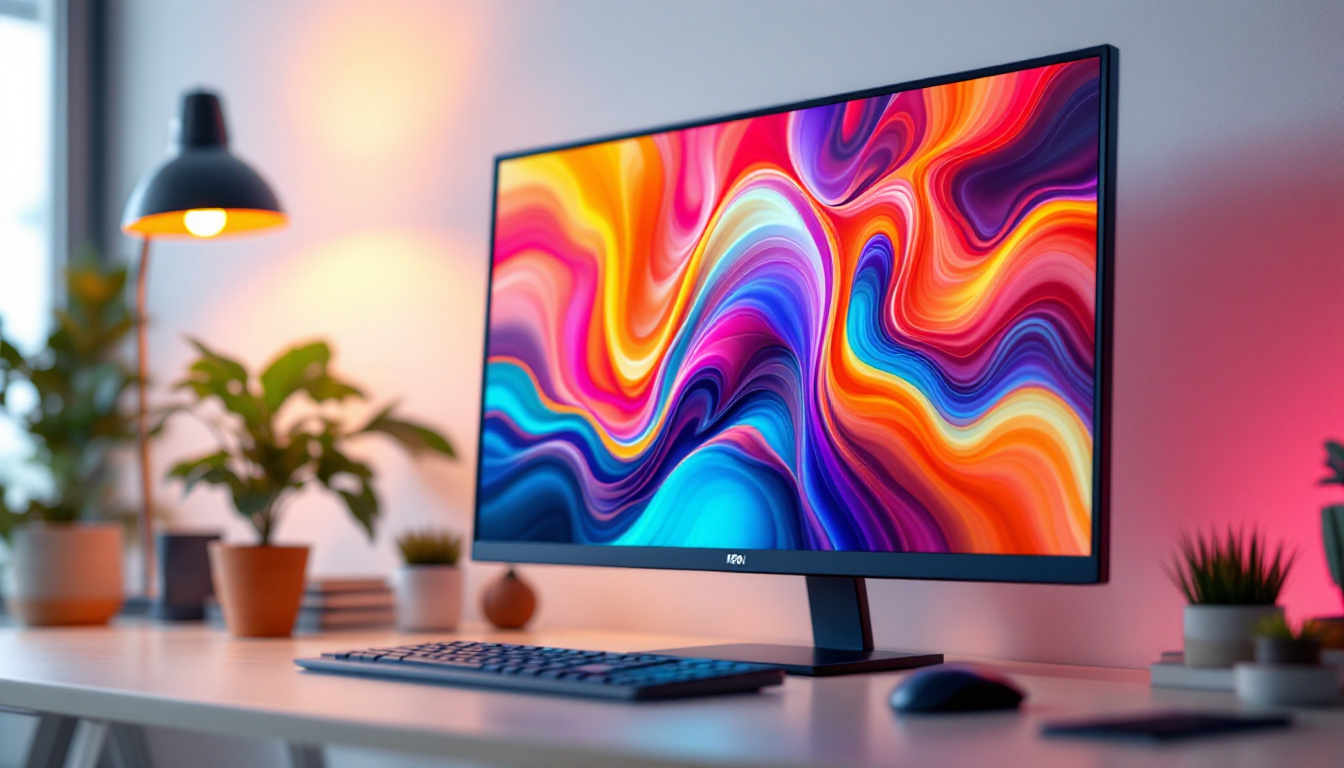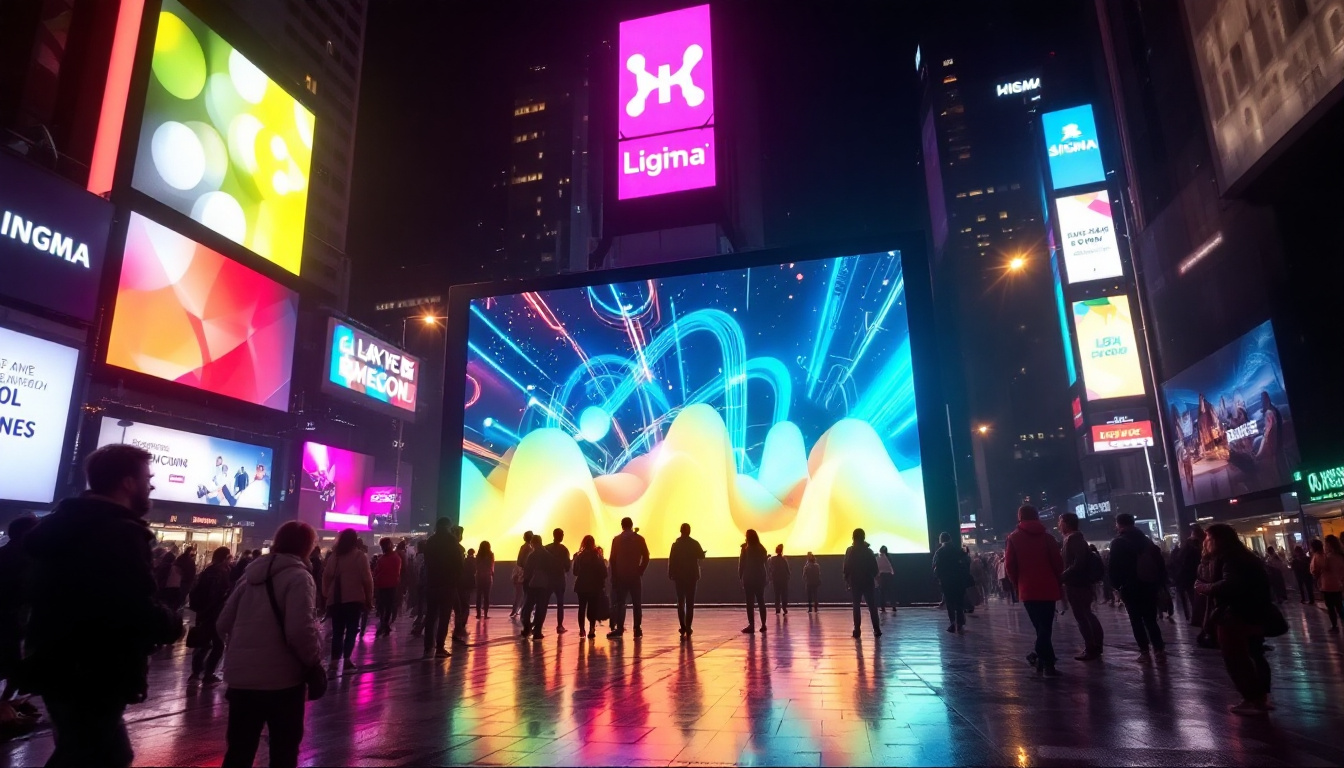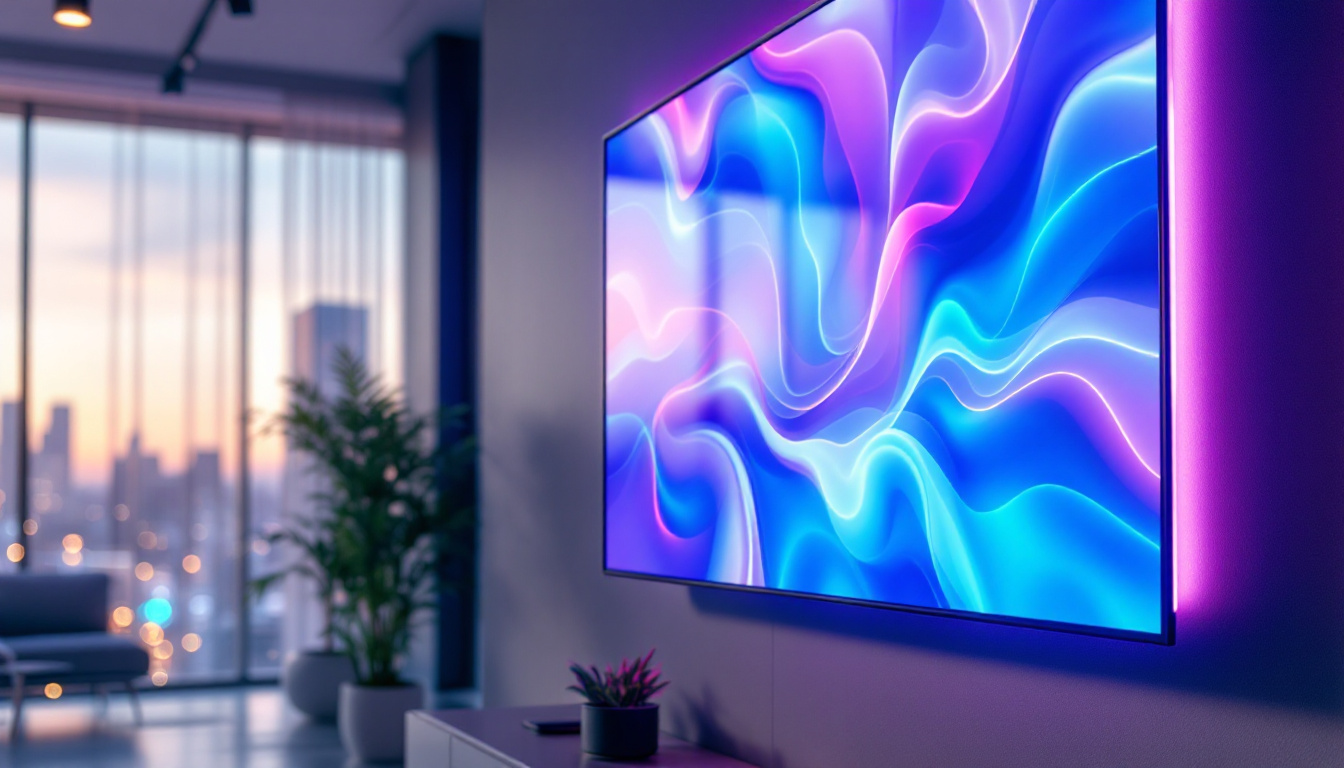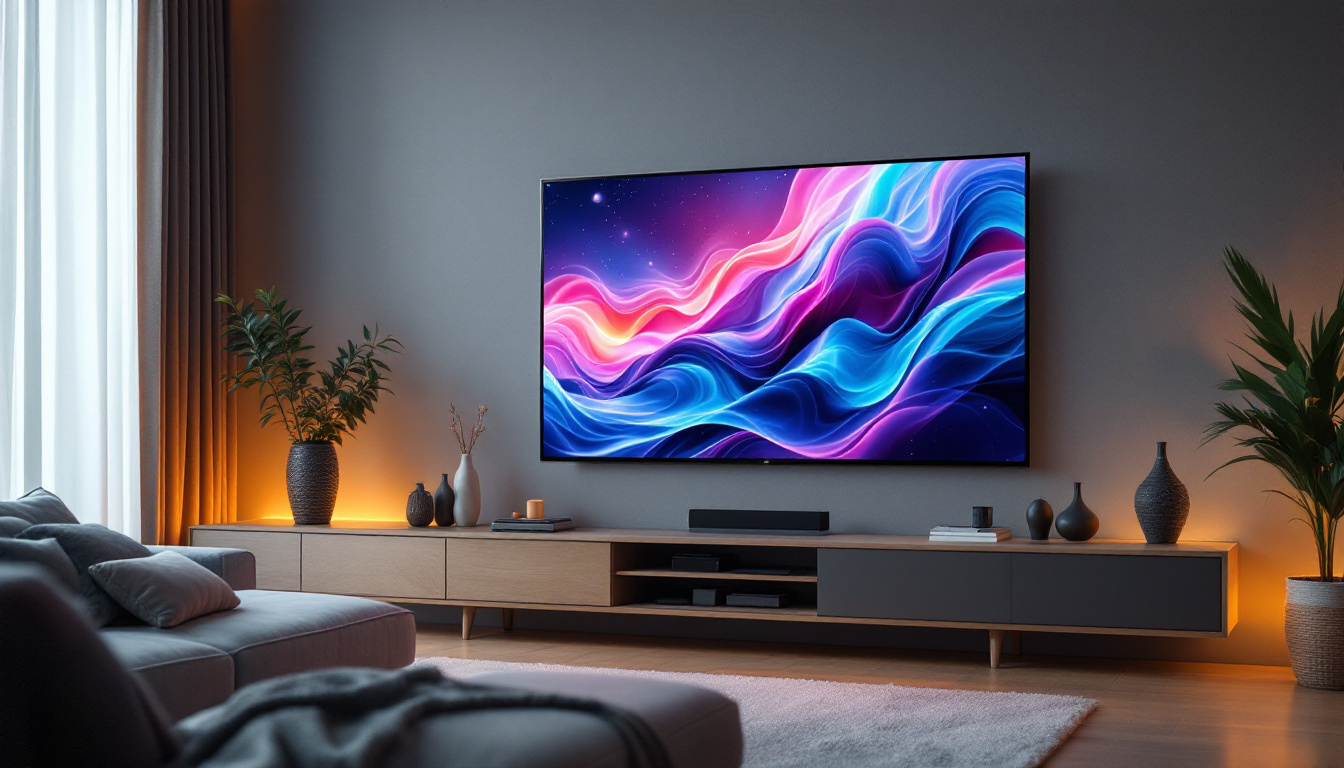Outdoor LCD Monitor: LED Display Explained
In today’s digital age, outdoor LCD monitors have become an essential tool for businesses and organizations looking to engage with their audience. These displays are not only versatile but also offer a range of features that make them suitable for various applications. This article delves into the intricacies of outdoor LCD monitors, particularly focusing on LED displays, their advantages, and how they function.
Understanding Outdoor LCD Monitors
Outdoor LCD monitors are specifically designed to withstand harsh environmental conditions while delivering high-quality visuals. Unlike traditional indoor displays, these monitors are built with robust materials that protect them from elements such as rain, dust, and extreme temperatures. Their construction often includes weatherproof casings and specialized coatings that resist corrosion, ensuring longevity and reliability in outdoor settings.
Key Features of Outdoor LCD Monitors
One of the standout features of outdoor LCD monitors is their brightness. These displays often boast a brightness level of 1,000 nits or more, ensuring that content remains visible even in direct sunlight. This high brightness level is crucial for outdoor advertising and information dissemination. Moreover, many models utilize advanced LED backlighting technology, which not only enhances brightness but also improves energy efficiency, making them more sustainable over time.
Another essential feature is the protective glass that shields the screen. This glass is typically anti-reflective and shatterproof, enhancing visibility and durability. Additionally, many outdoor monitors come equipped with built-in cooling and heating systems to maintain optimal operating temperatures, regardless of external conditions. This thermal management is vital for preventing overheating during hot summer days or ensuring functionality during freezing winters, thus extending the lifespan of the monitor.
Applications of Outdoor LCD Monitors
Outdoor LCD monitors find applications in various sectors. They are commonly used in advertising, where businesses display promotional content to attract customers. Furthermore, they are utilized in public transportation systems to provide real-time information to commuters. These displays can show arrival times, service updates, and even emergency alerts, significantly enhancing the commuter experience and ensuring safety.
In addition, outdoor monitors are increasingly being used in sports arenas and stadiums to enhance the spectator experience. They can display live feeds, replays, and advertisements, creating an immersive environment for fans. Beyond sports, these monitors are also making their way into public spaces such as parks and plazas, where they can serve as digital bulletin boards for community events, art installations, or informational kiosks, fostering engagement and interaction among the public.
LED Technology Explained
LED (Light Emitting Diode) technology has revolutionized the way displays are designed and utilized. Understanding how LED works is crucial for comprehending the advantages of outdoor LCD monitors that incorporate this technology.
What is LED Technology?
LED technology involves the use of semiconductor materials that emit light when an electric current passes through them. This process is efficient and allows for the creation of vibrant colors and high contrast ratios, making LED displays particularly appealing for outdoor use.
There are two primary types of LED displays: direct view and backlit. Direct view LED displays consist of individual LEDs that form the entire image, while backlit displays use LEDs to illuminate an LCD panel from behind. Both types offer significant advantages, but direct view LED displays are often preferred for outdoor applications due to their superior brightness and color accuracy.
Benefits of LED Displays
LED displays offer numerous benefits that make them ideal for outdoor environments. One of the most significant advantages is their energy efficiency. LED technology consumes less power compared to traditional display technologies, resulting in lower operating costs.
Moreover, LED displays have a longer lifespan, often exceeding 100,000 hours of use. This durability reduces the need for frequent replacements, making them a cost-effective solution for businesses. Additionally, LED displays provide excellent visibility in various lighting conditions, ensuring that content remains clear and engaging at all times.
Another noteworthy benefit of LED technology is its environmental impact. LEDs are free from hazardous materials such as mercury, which is commonly found in other lighting technologies. This makes them a more eco-friendly option, as they can be safely disposed of without posing a risk to the environment. Furthermore, the reduced energy consumption of LED displays contributes to lower carbon emissions, aligning with global efforts to promote sustainability and reduce energy waste.
In terms of versatility, LED displays can be configured in a variety of shapes and sizes, allowing for creative installations that can enhance the aesthetic appeal of any outdoor space. From large-scale billboards to smaller informational displays, the adaptability of LED technology enables businesses and organizations to tailor their visual communications to fit their specific needs. This flexibility, combined with the ability to easily update content in real-time, makes LED displays an invaluable tool for advertising and public information dissemination.
Choosing the Right Outdoor LCD Monitor
Selecting the appropriate outdoor LCD monitor involves considering several factors. Understanding the specific needs of the application will lead to a more informed decision and ultimately a better return on investment.
Brightness and Resolution
When choosing an outdoor LCD monitor, brightness is a critical factor. As mentioned earlier, a brightness level of at least 1,000 nits is recommended for outdoor use. Additionally, the resolution of the display should be considered; higher resolutions provide clearer images and text, enhancing the overall viewing experience. For instance, a 4K resolution monitor can deliver stunning visuals, making it ideal for applications where detail is paramount, such as advertising or information displays in high-traffic areas.
Moreover, it’s important to consider the ambient light conditions where the monitor will be installed. In environments with direct sunlight, monitors equipped with anti-glare technology can significantly improve visibility, ensuring that content remains legible and engaging, even in bright conditions.
Durability and Weather Resistance
Durability is paramount for outdoor displays. It is essential to select monitors that are rated for weather resistance, typically classified by the Ingress Protection (IP) rating. An IP65 rating or higher indicates that the monitor is dust-tight and can withstand water jets, making it suitable for outdoor environments.
Furthermore, consider the construction materials. Monitors with aluminum or steel casings tend to offer better protection against physical impacts and environmental factors compared to plastic alternatives. Additionally, some outdoor monitors come with tempered glass screens, which not only enhance durability but also provide better clarity and protection against scratches and vandalism. This is particularly important in public spaces where the risk of damage is higher.
Another aspect to consider is the temperature range in which the monitor can operate. Outdoor monitors should be capable of functioning effectively in extreme temperatures, whether it be the scorching heat of summer or the frigid cold of winter. Look for monitors that have built-in heating or cooling systems to ensure consistent performance regardless of the weather conditions.
Installation and Maintenance Considerations
Proper installation and maintenance are vital for ensuring the longevity and performance of outdoor LCD monitors. A well-planned installation can prevent issues related to visibility and accessibility.
Installation Best Practices
When installing outdoor LCD monitors, it is crucial to consider the location and angle of the display. The monitor should be positioned to minimize glare from the sun while maximizing visibility from various angles. Additionally, ensuring that the display is securely mounted will prevent damage from wind or other environmental factors.
It is also advisable to use professional installation services, as they can provide expertise in electrical connections and structural support, which are essential for outdoor installations.
Maintenance Tips
Regular maintenance is key to keeping outdoor LCD monitors in optimal condition. Cleaning the screen periodically with appropriate materials will help maintain visibility and prevent dirt buildup. It is also important to check for any signs of wear or damage to ensure that the monitor continues to operate effectively.
Furthermore, monitoring the internal components, such as fans and cooling systems, is essential. Keeping these systems in good working order will help prevent overheating and extend the lifespan of the monitor.
Future Trends in Outdoor LCD Monitors
The landscape of outdoor LCD monitors is continually evolving, driven by advancements in technology and changing consumer needs. Keeping an eye on future trends can help businesses stay ahead of the curve.
Integration with Smart Technology
One of the most significant trends is the integration of smart technology into outdoor LCD monitors. This includes features such as remote monitoring and control, allowing businesses to manage content and monitor performance from anywhere. Smart displays can also incorporate sensors to adjust brightness based on ambient light conditions, enhancing energy efficiency.
Interactive Displays
Another emerging trend is the rise of interactive outdoor displays. These monitors allow users to engage with content through touch screens or mobile devices, creating a more dynamic experience. Interactive displays are particularly effective in retail environments, where they can facilitate customer engagement and drive sales.
Conclusion
Outdoor LCD monitors equipped with LED technology offer a powerful solution for businesses looking to enhance their visibility and engage with audiences effectively. Understanding the features, benefits, and considerations associated with these displays is crucial for making informed decisions.
As technology continues to advance, the capabilities of outdoor LCD monitors will only improve, providing even more opportunities for innovation in advertising, information dissemination, and customer engagement. By staying informed about trends and best practices, businesses can leverage outdoor LCD monitors to achieve their goals and connect with their target audience in meaningful ways.
Discover LumenMatrix’s Innovative LED Solutions
Ready to elevate your outdoor advertising and audience engagement? Explore LumenMatrix’s comprehensive range of LED display solutions, designed to meet your every need. From captivating Outdoor LED Wall Displays to versatile Vehicle LED Displays and beyond, LumenMatrix is at the forefront of creating immersive visual experiences. Embrace the future of visual communication with our advanced LED technology that promises to transform your brand’s presence. Check out LumenMatrix LED Display Solutions today and see the difference innovation can make.

